Don't wanna be here? Send us removal request.
Text
Week 11: Global Social Media: Case Study China

Source: http://feelgrafix.com/group/china.html
I’d never really thought about the difference between social media here in the western world and that of SM in China and Asia – until I began this week’s learning materials.
When I began reading about China’s censorship laws it didn’t really surprise me. China is a communist nation and as such they would have a lot of control on what their citizens’ view on the internet and what content their citizens put out over the internet. It was interesting to read the lengths that the government will go to keep certain types of information private: In the article The Great Firewall of China it talks about the complexity of China’s government censorship laws and breaks it down into three main types; Technical - The Great Firewall of China, Human Powered (where workforces are employed to delete posts and adds posts to spin the debate) and Self-Censorship.

Source: https://www.opendemocracy.net/china-correspondent/great-firewall-of-china
I feel lucky that I live in a democratic world where my freedom of speech isn’t quashed by overbearing governments.
However, social media in China is bursting, and parts of it are filtering down to the rest of the world but I’d hardly say that China is leading the way. Most of their social media sites are copies of social media platforms created by western society. For example, we have Snapchat, a platform used to share images and video with friends. China have Papa, a platform used to share images and video with family and friends. China has Momo. This platform is a location based tool that helps you “hook up” with random people. Sound familiar… yep, Tinder.
Basically, China have created their own social media platforms for their own country, and because the population of China and the rest of Asia is so big, social media is going off.
I was also interested to read that the popularity and use of some social media sites are based on where you live and how much you earn. In an article titled China’s Social Media Boom, Chiu, Lin and Silverman (2013) write “Consumers who favour Sina Weibo tend to be in higher income brackets, earning more than 8,000 renminbi (about $1,300) a month, and are much more likely to live in Tier 1 cities (Tier 1 cities are comprised of Beijing, Guangzhou, Shanghai and Shenzhen).
It’s something you really don’t see in the western world. Everyone has easy access to Facebook, Twitter, YouTube and Snapchat… regardless of how much you earn.
So do I agree that China is leading the way in terms of social media? No I don’t, and Mark Zuckerberg may have something or two to say about this as well!!

Source: https://www.theinformation.com/interview-mark-zuckerberg-cover-facebook-for-the-information
China may be leading the way in their own little universe of Asian influenced, copycat versions of popular social media sites, but I do believe that, in the near future, we can look forward to being able to utilize these copycat sites here in the western world and hopefully, maybe one day, China and the rest of Asia will get to enjoy Facebook and Twitter, Snapchat and YouTube.

Source: http://magicmirrorproclamations.blogspot.com.au/2013/06/faceblocked-great-firewall-of-china.html
P.S. That brings us to the end of my blog posts for MDA2009: Digital Communities. Thanks to everyone who has left comments on my posts. Hope you enjoyed the read.
Over and Out!
References:
Chiu, C, Lin, D & Silverman, A 2012, China's social-media boom, McKinsey & Company, viewed 3 August 2016, <http://www.mckinsey.com/insights/marketing_sales/chinas_social-media_boom>.
DLDconference 2013, DLD13 - How Social Media is changing China and Asia, 7 February, viewed 3 August 2016, <https://www.youtube.com/watch?v=rG3z2ucaR6A>.
The Great Firewall of China 2013, Open Democracy viewed 3 August 2016, <https://www.opendemocracy.net/china-correspondent/great-firewall-of-china>.
Greatfirewallofchina 2014, viewed 3 August 2016, <http://www.greatfirewallofchina.org/>.
1 note
·
View note
Text
Week 10: Social Gaming: Playing the crowd.
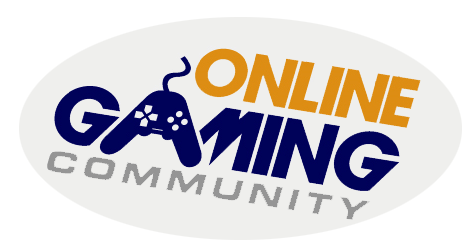
Source: http://onlinegaming.community/
This week, members of our group did a presentation on Social Gaming. It was fantastic. The theme and information looked like an actual online game. It was one of the best presentations I’ve seen throughout this unit.
They posed an interesting question… Is social gaming a benefit or a hindrance to the social world?
How do online games facilitate in digital communities and online publics…?
A few years ago whenever someone mentioned online gaming, visions of geeky looking boys in darkened rooms sitting in front of computers were brought to mind. It was nerdy. It was laughed at.

Source: http://www.thehealthygamer.com/2015/02/18/online-gaming-addiction-addicted-worried/
Now, games such as World of Warcraft is one of the most popular multiplayer online RPG’s (role playing games) of all time. It’s been around for the past 10 years and in that time “people have met through the game, married, and had children who are now old enough to play” (Byrne 2014).
The world of online gaming no longer hibernates the nerdy looking boy in his mother’s basement. It’s opened itself up to people of all genders, ages and walks of life. And all these people are able to come together and communicate through their love of the games they play via forums, chat rooms, social media and now, ever increasingly, conventions.
However, as with most things life there are rules and codes of practice that people must abide by. In the gaming world there are rules set up by gamers and rules set up by people who play the game.
De Zwart and Humphries (2014) explain this in more detail in relation to MMOG EVE Online;
“Game rules created by developers in the establishment of an online digital game space intersect and overlap with rules created socially by players, with cultural norms emerging from within the game space and from the contexts of play, with legal rules developed by lawyers managing the interests of publishers and with law and values originating in the real world contexts of players in whichever legal jurisdiction they are located”
Of course where you have a number of different people imposing different rules, conflicts can and will occur. Such as the dismissal of players from the game for harassment of other players, and breaching a games Terms of Service.
I’m not an online gamer. Never have been, never will be. I never got into the social gaming craze. I just couldn’t understand why or how so many people could spend so much time on their phones playing games, when life was just passing them by.
I found other ways of entering digital communities and online publics – through my love of pop culture. I attend various conventions when they’re in town, such as Supernova and Oz Comic Con. I’m not a cosplayer but I do appreciate and enjoy the effort some people put into their costumes, which include characters from the online gaming world.
My love of certain TV shows has allowed me to enter online groups and forums where I have been privileged to not only meet the stars of these shows but through it, made lifelong friends with like-minded people.
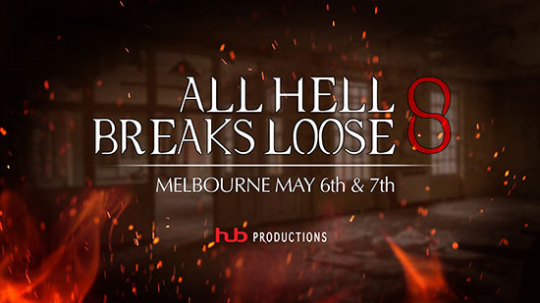
Source: www.thehubproductions.com
References:
Byrne, S 2014, A Massive Success: 10 Years of World of Warcraft, cnet, viewed 27 January 2017, <https://www.cnet.com/news/world-of-warcraft-ten-year-anniversary-interview-ion-hazzikostas/>
de Zwart, M & Humphries, S 2014, The Lawless Frontier of Deep Space: Code as Law in EVE Online, Cultural Studies Review, Vol 20, Number 1, pp77-99
2 notes
·
View notes
Text
Week 9: Visual Communities and Social Imaging

Social Media Imaging: http://www.cctiirsc.com/
This week, I was part of a group that did a presentation on the rise of Instagram. In particular, how people and business are using the social media platform as a business tool. In some cases it works, in other cases it fails miserably. But it showed how Instagram and other social media platforms can either make or break you, and how putting your life and business online can lead to a successful profile or your demise.
As I’m only an Facebook user, any photos or video I take get shared via this platform only, and only to my close group of friends. My privacy settings are pretty stringent. So when I do tag someone it’s from my close group of friends.
However, the scary thing is when Facebook does the tagging for you via face recognition! I’m not opposed to tagging or being tagged, except when I don’t approve of the photo :)
But in these uncertain times of hacking and identity theft I can see why tagging would create tension and uncertainty in the digital community. People are using profile pics and photos that others have been tagged in to create fake profile accounts and hacking people’s Facebook accounts. It also causes tension and anxiety in people that are self-conscious - who do not want their photos shared or tagged.
The visual aspect of social media appears to be getting ever popular. People, especially the younger generation, are using platforms such as Instagram and Snapchat to communicate with their friends and followers. Snapchat differs to say Instagram or FB as a visual sharing tool as it allows ephemerality. Which means that the information shared is only online for a short period of time.
The way Snapchat works is that you send photos and images to your friends. These images or ‘snaps’ can then be viewed for up to 10 seconds then the image disappears. You can add captions, doodles or filters, making your image fun and unique. Whereas posting on FB and Instagram your photos and videos remain. Its gives the user control over how their information is shared.

Snapchat logo (n.d.) <http://eonli.ne/1J1ux32>
Its immediacy allows people to take a quick ‘snapshot’ of what they are doing at any given moment and share it among friends. Hence the name, ‘Snapchat’. It’s like a ‘status’ but of a visual kind.
And according to my 16 year old cousin who is an avid Snapchat user, she prefers it to platforms like Facebook because of its ephemerality (or in her words; because its quicker and doesn’t last) and its less boring apparently.
According to Forbes magazine, 50 million people currently use Snapchat with the median around being around 18. While Facebook has seen a recent decline in its teenage users. Facebook’s median age is now around 40.
When studying the world of digital communities the overall theme of visual media and social imaging practices feature heavily. It’s especially prevalent within the last few weeks of this particular unit of learning where we looked at topics such as activism and protest, trolling and social media conflict and crowdsourcing.
Social imaging practices form the basis of these particular topics as they rely on photos and images that get uploaded to social media. These images are then used to either help in times of crises or disaster or they become fodder for trolls and hackers. Highlighting again the highs and lows of social media.
References:
Colao, J.J. 2014, The Inside Story of Snapchat: The world’s hottest app or a $3 Billion Disappearing Act, Forbes, viewed 20 January 2017, http://www.forbes.com/sites/jjcolao/2014/01/06/the-inside-story-of-snapchat-the-worlds-hottest-app-or-a-3-billion-disappearing-act/#1918295255ec.
Swinburne Online, 2016, Week 9 Visual Communities and Social Imaging, Digital Communities Learning Materials, viewed 20 January 2017 https://ilearn.swin.edu.au/bbcswebdav/pid-5949029-dt-content-rid-31715128_2/courses/2016-SO3-MDA20009-217733/UnitLearningMaterials/week-09.html .
Betters. E, 2015, What’s the point of Snapchat and how does it work, Pocket-lint, viewed 20 January 2017 http://www.pocket-lint.com/news/131313-what-s-the-point-of-snapchat-and-how-does-it-work.
'Snapchat' n.d., [logo], viewed 3 August 2016, <http://au.eonline.com/eol_images/Entire_Site/2014611/rs_600x600-140711114502-600-tech-snapchat-logo.ls.7114_copy.jpg>.
Social Media, [logo], viewed 20 January 2017, <http://www.cctiirsc.com/>.
3 notes
·
View notes
Text
Week 8: Crowdsourcing in times of crises
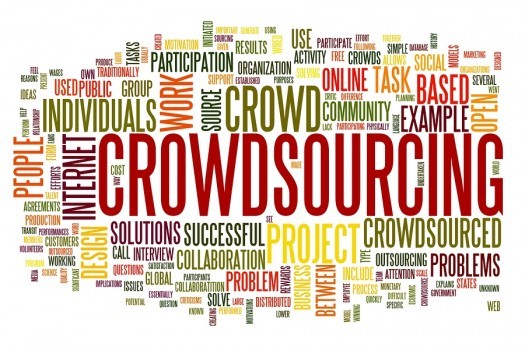
Image source: http://www.socialbrite.org/tag/crowdsourcing/
This week’s learnings and discussions lead us through communication in times of crisis and the ups and downs of using crowdsourcing.
For those not in the know ‘crowdsourcing’ is 'the practice of obtaining needed services, ideas, or content by soliciting contributions from a large group of people and especially from the online community rather than from traditional employees or suppliers' (Merriam Webster Online 2014).
Basically put, it’s how the general public and emergency services use social media platforms to share information and convey messages about imminent threats or danger to our community in terms of natural disasters or other. For example ‘crowdsourcing’ was used quite heavily during the QLD floods of 2011 and the massive earthquake that hit Haiti in 2010.
Image source: http://www.optimizationgroup.com/crowdsourcing-vs-co-creation-whats-the-difference/
Let’s take a look and see how social media played a part in each of the natural disasters mentioned above.
Queensland Floods 2011

Image souce: http://www.abc.net.au/news/2011-08-01/flood-inquiry-report-released/2819106
Starting with the Queensland floods. Twitter played a huge and integral part of communication during the flood crisis. The following stats come from a CCI Report investigating the use of Twitter during the QLD floods;
The hashtag #qldfloods was used more than 35,000 times during this period.
50-60% of #qldfloods were retweets and 30-40% of messages contained links to information on other websites
Emergency services and media organisations were among the most visible participants in #qldfloods
Leading accounts including the Queensland Police Service Media Unit (@QPSMedia), ABC News (@abcnews), and the Courier-Mail (@couriermail) received some 25 retweets for each of its messages, significantly amplifying audience reach.
By contrast the overall #qldfloods discussion contained substaintially more tweets by disussing the wider implications of the disaster and offering personal reactions, often send for elsewhere in Australian and the world.
As you can see, Twitter was an important advantage for, not only those directly affected, but also an advantage and opportunity to raise the profile of media and emergency services.
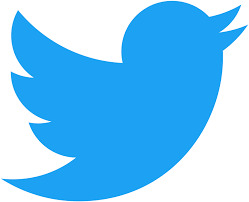
Through crowdsourcing, The Queensland Police Service Media Unit were able to collate all the retweets, images and video being sent through and via their account, disseminate and communicate
Haiti

Image Source: https://feww.wordpress.com/2010/02/23/earthquake-damage-in-haiti-engineers-report/
For the crisis in Haiti, it wasn’t so much social media that provided much needed information, it was other forms of technology such as radio and phone messages.
In our group discussion this week we spoke about how the use of text messaging and radio played an important role in the ability to share information about the Haiti crisis.
A phone number was set up to allow free text messages for anyone in Haiti. These messages were then used in an online capacity as volunteers where able to translate the messages and post information via various crowdsourcing platforms. These were then able to be picked up by rescue and emergency services on the ground for immediate response. The use of radio quickly became the best resort for directing aid.
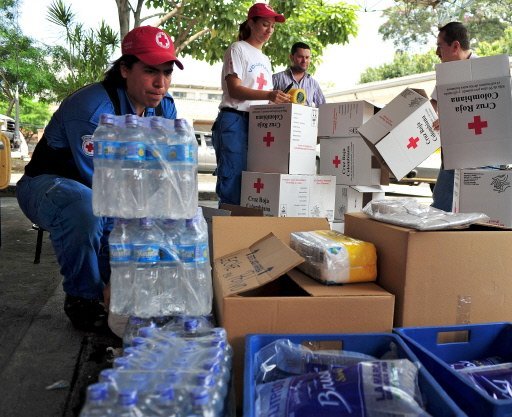
Image source: http://www.ladepeche.fr/article/2010/01/14/754944-haiti-l-aide-internationale-aux-victimes.html
At this point you might be thinking – isn’t crowdsourcing wonderful. But let’s not get too carried away. It’s not without its fair share of problems. One of them there is verification and credibility of information.
A classic example is that of the use of Ushahidi (Ushahidi was a media platform set up to report on the human rights abuses in the wake of the Kenyan presidential elections. Originally is was a collaboration between Kenyan and international citizen journalists and software developers. Since then it’s now able to be used worldwide for people to share their own mapping website and post reports). In her article on the use of Ushahidi, Heather Ford (2012) talks about the issue of verification. It was reported that verification for Ushahidi became critical during the Kenyan crisis. It became a problem as people were sending text messages just to start rumours. Information then had to be overlayed with that of mainstream media resulting in less reports and less mapping information.
So things like fake reporting and hackers can have a detrimental effect to crowdsourcing in times of crises.
Queensland Police Service Media Unit were able to combat this problem by setting up a #Mythbusters tweet. They were able to directly tackle any rumours or misinformation that came through in relation to the floods and these were then successfully retweeted.
Humanitarian Organisations
In the wake of disasters such as these, it appears that humanitarian organisations such as Red Cross UNICEF and other non-governmental organisations (NGO), all use social media to be able to collect information and using, visuals, coordinate relief making decisions. Social media is also a powerful tool for fund-raising and advocacy. A great example of this was the ASL Ice Bucket Challenge.
Those are the advantages. The disadvantages of using crowdsourcing data is the data is public, the information is not always reliable, harking back to my previous discussion on verification. Privacy and safety also becomes an issue in regards to details of donors and pictures or details of recipients but also the protection of the aid workers.
References:
Bruns, A, Burgess, J, Crawford, K & Shaw, F 2012, #qldfloods and @QPSMedia: Crisis Communication on Twitter in the 2011 South East Queensland Floods, Arc Centre of Excellence for Creative Industries and Innovation, pp. 7-10, viewed 13 January 2017, <http://www.cci.edu.au/floodsreport.pdf>.
Barbier. G, & Gao. H, & Goolsby. R, 2011, Harnessing the Crowdsourcing Power of Social Media for Disaster Relief, Cyber-Pyhsical-Social Systems, viewed 13 January 2017, <http://isivast.org.vn:8888/bitstream/123456789/11336/1/Intelligent%20systems%20and%20their%20application.Vol.26.Iss.3.A.1.pdf>
'crowdsourcing entry' 2014, Merriam Webster, viewed 13 January 2017,<http://www.merriam-webster.com/dictionary/crowdsourcing>.
Ford, H 2012, 'Crowd Wisdom', Index on Censorship, vol. 41, no. 4, pp. 33-39.
Khor. S.K, 2015, Top 3 Ways Social Media can Help Humanitarian Work (and 3 Pitfalls), Innovations in Health Communications, viewed 13 January 2017, <https://ihealthcomms.wordpress.com/2015/08/16/top-3-ways-social-media-can-help-humanitarian-work-and-3-pitfalls/>.
2 notes
·
View notes
Text
Week 7: Digital Citizenship 3: Trolling & Social Media

Source: https://www.chelseacrockett.com/wp/lifestyle/haters-gonna-hate/
Before social media bullying was kept to the school yard. It was harsh and it was horrible. Since the introduction of social media bullying has taken on a whole new level of evil.
Social media has given people an avenue to truly hateful and because they do it behind closed doors they don’t see the repercussions’ of their actions. Or maybe they do and they don’t care. These ‘closed doors’ of the online world have given rise to trolls. Beastly human beings who sole purpose is to cause offence, chaos and mayhem online through platforms such as Youtube, Reddit, tumblr and Facebook. Half the time the trolling has nothing to do with the initial post, they will just choose a random comment and spew out hatred and vitriol – turning a Youtube of the haka, a celebration of culture, into a racist and hate driven event.

Source: http://sites.psu.edu/tosincas238blog/2015/11/06/internet-trolls/
I get everyone’s right to free speech, I’m not against that – everyone has the right to be able to comment and offer their opinion. It’s when it goes too far – that’s when the trouble starts. And while governments are doing all they can to try and combat cyberbullying I believe that platforms should be able to intervene when things go too far.
The government website https://www.esafety.gov.au/ offers some great ideas for parents and students to be able to combat cyberbullying and the Rewrite Your Story offers kids a way to think about what they are writing on social media and the consequences it can have. They also offer training programs for schools.
However, social media platforms, I feel, should do more to protect the people that use them. Threats of violence and telling someone to ‘go kill themselves’ is wavering that right of speech.
Facebook declare in their terms and conditions that in terms of bullying and direct threats that they will “We remove credible threats of physical harm to individuals… We allow you to speak freely on matters and people of public interest, but remove content that appears to purposefully target private individuals with the intention of degrading or shaming them” (Facebook T&C’s).
I don’t believe just removing the content is enough. My recommendation is to shut down the account completely or name and shame the perpetrator. These people will continue to harass and bully unless they have no longer have any means of doing so.

Source: https://antibullyingsoftware.com/what-is-cyber-bullying/
And thank god George Brandis didn’t get his way when he wanted to change the Racial Discrimination Act. Again I admit that everyone has the right to freedom of speech, once they have their facts right, (I’m looking at you Andrew Bolt), but in no way does this give them leeway to bigotry or racism. And these are the sorts of people we have running the country… Yikes.
For the full article click here Brandis You Idiot.
References.
Facebook Terms and Conditions, viewed 6h January 2017 https://www.facebook.com/communitystandards#bullying-and-harassment
0 notes
Text
Week 6: Digital Citizenship: Activism and Protest.
It’s safe to say that I’m not much of an activist or protestor. Maybe quietly. I think I’ve maybe signed a petition a couple of times in my life. But even then it has to be something I’m extremely passionate about. I tend to ignore protests because most of the time they all spiral into senseless, meaningless violence and no real change is being made. Although I do like and follow pages on Facebook that support certain causes, so I guess you could say I’m fairly “active” on activism.
This week we looked at activism and protesting in the online world and the use of social media as a tool for online change.
There’s been a lot of study into how people use social media to push for change in the world. A lot of the time it has proven to be of great benefit.
Online petition sites such as Change.org and GetUp! have had varying success rates for change both here in Australia and overseas. The latest victory for change.org was the legalisation of same-sex adoption for couples in South Australia (so you can adopt but not marry… hmm!!)
Social media has also been used by countries to insight both resistance and uprising. Youmans and York (2012) wrote that social media played an important role in the collective actions that resulted in the overthrow of the governments of Egypt and Tunisia’s revolution.
Social platforms such as Facebook played a big role in the Egyptian uprising with one user creating the ‘We are All Khaleed Said’ page. This group was formed after blogger Khaled Said was brutally murdered after allegedly posting a particularly incrimination video of police officers. This quickly led to an 18 day protest in Tahrir Square asking for Mubarak to resign. Which he did. Organisers relied heavily upon Facebook and Twitter to communicate, even though the government tried to block internet access – where there was a will there was a way.
Social media played a big part in the ‘Gezi protests’ in Turkey. Quick recap on Gezi protests – government wanted to tear down the only green park in the city of Istanbul que protest. However things got ugly when police used unnecessary and violent force to remove protestors from the park, sparking outrage all over Turkey.
While governments kept mainstream media quiet, Twitter and Facebook were broadcasting events on street level. A study by NYU’s Social Media and Political Participation into the use of social media during the protests showed that ‘on 31 May 2013, since 4pm local time, at least 2 million tweets mentioning hashtags related to the protest, such as #direngeziparkı (950,000 tweets), #occupygezi (170,000 tweets) or #geziparki (50,000 tweets) have been sent. Even after midnight local time, more than 3,000 tweets about the protest were published every minute'. (Guner, 2016)
Even though the president didn’t step down, building works on the park ceased. However hundreds of protestors are still facing criminal charges and some have lost their jobs because of it.
So is it all worth it in the end?
There’s been a lot of discussion about clicktivism or slacktivism which means the kind of activism that has no real lasting effect on the world. Yes it certainly brings it to the attention of the world but what is the after-affect? There isn’t always a ‘win’ when it comes to protests or acting for change. So there is some credit to the comments surrounding clickivism as 'feeble motions immersed in the everyday many times removed from the hot arena of politics' (Bakardjieva, 2009, p. 103).
Whether social media as an online tool for change actually works, remains to be seen – but that’s not to say it won’t stopped being used as one. Social media brings the attention of a plight, a revolution, human rights, to the attention of the world and that’s something that can’t be ignored. We will still continue to sign petitions, support a movement on Facebook, upload a video of atrocities to Youtube or Tweet to the masses. Why? Because we can. Because we’ve been given the platforms to do so. Because it’s the only way we can affect real change.
References:
https://www.change.org/en-AU
Guner. S.E, 2016, The impact of social media on political change: Gezi protests in Turkey, Research Turkey, viewed 16th December 2016 <http://researchturkey.org/the-impact-of-social-media-on-political-change-gezi-protests-in-turkey/>
Bakardjieva, M 2009, 'Subactivism: Lifeworld and Politics in the Age of the Internet', Information Society, vol. 25, no. 2, pp. 91-104.
Youmans, W, & York, J 2012, 'Social Media and the Activist Toolkit: User Agreements, Corporate Interests, and the Information Infrastructure of Modern Social Movements', Journal Of Communication, vol. 62, no. 2, pp. 315-329.
2 notes
·
View notes
Text
Week 5: Digital Citizenship 1: Politics & Civic Cultures
@TurnbullMalcolm @billshortenMP @JacquiLambie @PaulineHansonOz @JulieBishopMP @mikebairdMP @realDonalTrump
The first thing that came to mind about this week’s learning materials was the constant tweeting by Donald Trump during the US election.
I’ll be honest, I’m not on Twitter, but the media make it a point to let us know when a politician has something to say – whether it be constructive or not.
Let’s use the US election and the continuing tweeting by president elect Donald Trump – this is a perfect example of Trump using social media to connecting connect with his voters but it also gave the media enough fodder to use as amateur political comment and satire.
Alex Baldwin’s impersonations of Donald Trump on Saturday Night Live during the US election played a somewhat important role in Trumps campaign because, even though Trump didn’t like it, it kept him relevant and at the forefront of media attention.
Back to Australian politics. It seems that most politicians used social media such as Twitter, Facebook, Youtube and blogs to post speeches they have made in parliament or op-eds they have written or to post policies. However their followers were quick to let them know that this method of interaction was not what the public wanted (Jericho, 2013)
But for politicians like Malcolm Turnbull and Mike Baird, they have worked out how to reap the benefits of Twitter and social media. ‘Turnbull was the first Australian lower house politician to join Twitter and fast became a prolific tweeter’ (Jericho, 2013)
Turnbull enjoys the interaction and level of engagement he receives from Twitter and his tendency to engage ‘can sometimes depend of how mischievous he is feeling’ (Jericho, 2013)
Mike Baird made headlines, not for his political tweets but his tweeting about reality TV series The Bachelor…
http://www.mamamia.com.au/mike-baird-bachelor-tweets/
Julia Bishop’s use of emoji’s also makes the article.
I believe that if politicians want to attract the younger vote it’s not going to matter if they look good on YouTube, it’s going to come down to how well they use and engage with social media. For example, Bernie Sanders ‘won more votes among those under 30 than the two presumptive major-party presidential nominees combined (The Washington Post, 2016)
https://www.washingtonpost.com/news/the-fix/wp/2016/06/20/more-young-people-voted-for-bernie-sanders-than-trump-and-clinton-combined-by-a-lot/?utm_term=.8108b49ba70f
It’s not enough for a politician to post their political views, what makes them engaging is the ability to have a laugh (at themselves) and to engage people in issues they are interested in. The latest US election also taught us that you need to be able to engage with the ‘forgotten’ groups, in America’s case this was the Middle American white male voter.
The future of electioneering using social media platforms and technologies is unclear. A study on the 2007 Australian election concluded that while ‘social media expanded the public sphere during the 2010 Australian federal election in terms of sites of participation and increasing engagement by citizens… there is little evidence that social media enhanced the public sphere qualitatively in terms of dialogue, the quality of debate, or focus on major issues, except in a few noteworthy cases’ (Macnamara, 2010).
However, social media was crucial in Barack Obama’s campaign for presidency in 2008…
‘The digitalization of campaigns propelled voters to learn about the candidates and issues, and encouraged Americans to become politically socialized online due to the rapid dissemination and careful targeting of social media straight from the campaign itself’ (Pineiro, 2015)
So if it worked for Americans, what do we need to do for it to work in Australia…?
References:
Jericho, G 2012, How many votes are there on Twitter?, in The Rise of the Fifth Estate, Scribe, Victoria, Australia.
Macanamara. J, 2010, Electioneering 2010: Social Media in the Australian Federal Election, Australian Centre for Public Communication, University of Technology Sydney <https://www.uts.edu.au/sites/default/files/fass-acpc-e-electioneering-2010-acoc.pdf>
Pineiro. R, 2015, E-Electioneering: The Political and Cultural Influence of Social Media in the 2008 and 2012 Presidential Elections, Inquires Journal Social Sciences Arts & Humanities, Vol 7, Issue 2, viewed 5 December 2016 <http://www.inquiriesjournal.com/articles/990/e-electioneering-the-political-and-cultural-influence-of-social-media-in-the-2008-and-2012-presidential-elections>
Young, S 2010, 'News, political reporting and the internet', in How Australia Decides, Cambridge University Press, Victoria, Australia.
1 note
·
View note
Text
Weeks 1-3
These first three weeks have clearly put into focus how much I don’t know about Digital Communities let alone the differences between social media and social networking.
So let’s dive in.
Social media is an electronic tool that lets us access and publish information, build relationships and gives us the ability to come together in the one place to share a common interest. What I’ve learned is that this extends beyond my meagre use of Facebook.
Some popular examples include Reddit and Twitter – in particular Twitter’s use of the hashtag. The hashtag lets people with a common interest in a particular topic or event, come together to discuss and comment on that particular hashtag. For example during the recent US election some of the more popular hashtags were... #ElectionNight, #crookedhillary, #dumptrump, #election2016.
So where does that leave platforms like Facebook and LinkedIn – platforms I’m more familiar with…. Well these come under the term ‘social networks’. According to boyd and Ellison (2007) ‘Social networks provide web services which facilitate users maintaining a public or semi-public profile within a bounded system and through which they can articulate a list of other users whom they share a connection’ (Murthy 2013).
When I look at the two I see a picture emerge…. I see social media being something that appeals more to a younger generation, i.e. Millennials and Gen Y whereas I see Social networking as something that Gen X and baby boomers would be more comfortable in using because it provides them with a certain anonymity.
But I guess ‘how much you want people to see you online’ depends on the individual. There would be scores of individuals from different age groups who live in these online or virtual communities, who have 300 Facebook friends or 1000 Twitter followers.
Back in my day (as in when I was at high school) I had maybe 5 close friends who we would meet up and go out with, stay at each other’s houses, and just hang out. With the introduction of new media into our lives, we are radically changing the way we interact with each other. In fact, Sherry Turkle in her 2013 TED talk Connected But Alone suggests we would rather communicate in these virtual communities rather than physical talk to one another.
So are we losing our sense of ‘community’?
Theorists, such as Robert Putman (1995) argue that if we don’t meet and engage with other people, social trust and the social fabric that holds society together will eventually resolve…. Society won’t be much more that a collection of individuals, meeting and socialising occasionally but who do not share strong bonds or any sense of common purpose.
Yet others would suggest that virtual communities are more welcoming and open – a place where information, ideas, feelings and desires can be shared. (Calhoun, 2002)
There are so many different platforms out there, each one having a different use for a different purpose, and while it’s great that we can use these to communicate with different people across the globe, are we alienating ourselves from the people that are physically in our lives?
Is it all getting just too much?
Reference List
Boyd, D & Ellison, M n.d., 2007, ‘Social network sites: Definition, history, and scholarship’, Journal of Computer-Mediated Communication, vol. 13, no. 1, pp. 210-230.
Murthy, D 2013, Twitter: Social Communication in the Twitter Age, Wiley, pp. 1-13.
Siapera, E 2012, ‘Socialities and Social Media’, in Introduction to New Media, Sage, London, pp. 191-208.
TED-Ed 2013, Connected, but alone?- Sherry Turkle, 19 April, viewed 3 August 2016, <https://www.youtube.com/watch?v=rv0g8TsnA6c>.
7 notes
·
View notes